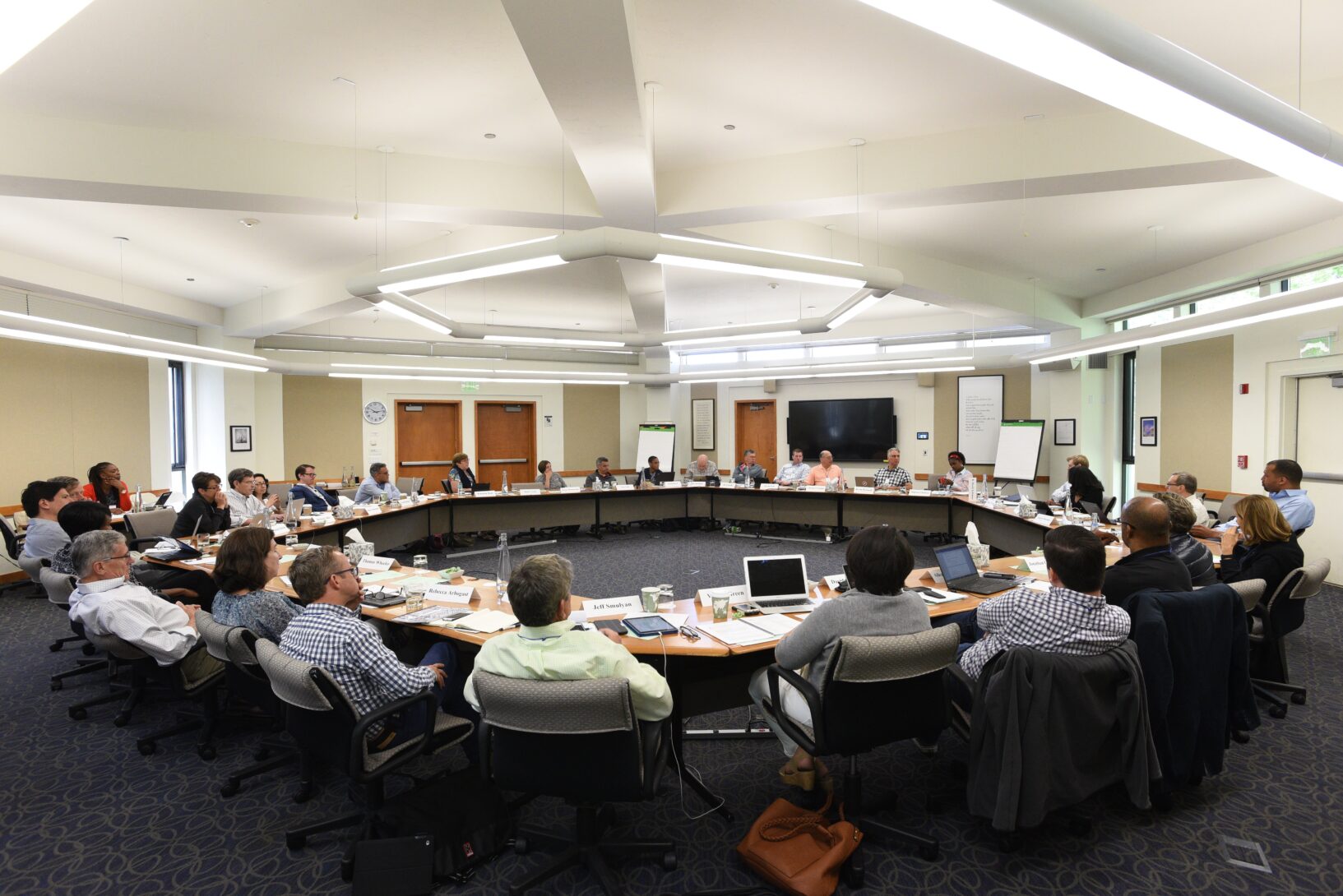As 2016 comes to a close, the Aspen Institute Communications and Society Program invites you to join us as we celebrate and reflect over an exciting year marked by thoughtful, constructive discussions on a range of issues. The following “2016 Year in Review” series offers highlights from the various programs as well as insight into 2017 programming. For more information, please visit our homepage and or follow us on Twitter or Facebook
In navigation, an azimuth is the distance between true north and the destination; it fixes a guiding star over the goalposts. Telecommunications is a field in need of an azimuth: new technologies and new challenges are defining features of the field, and navigating them calls for steady leadership. Last summer, the Aspen Institute’s 31st annual Conference on Communications Policy explored the key telecommunication challenges and opportunities the incoming Administration will face.
Federal Communications Commission (FCC) Chairman Tom Wheeler opened the conference by suggesting that the United States use its past experience in telecommunications policy as the azimuth it needs to chart a path forward. Over the past seven years, he pointed out, the Obama Administration has had many successes in broadband policy. The Administration’s ConnectAll and ConnectED initiatives focused on ensuring connectivity for millions of Americans. The FCC has also worked to expand consumer protection, access, and inclusivity to various communication channels. For example, in March 2016, the FCC approved an expansion of the federal Lifeline program to include subsidies for broadband service for low-income households, a move aimed at narrowing the digital divide.
In the months since the Aspen conference in August, it has grown more apparent how deeply Americans are divided. But the Aspen campus has always been a place to seek common ground. Holding bipartisan dialogues to bridge our divisions is more crucial now than ever, and that spirit of bipartisanship permeated the meeting.
Participants included regulators, policymakers, scholars, communications business executives, and public-interest leaders representing a broad variety of viewpoints and interests. To test how much common ground might lay between them, representatives from both parties laid out the key premises that shape their approaches to communications policy. Together, they explored thorny questions such as:
- Are traditional approaches to regulation becoming outdated in a broadband Internet world, or can they be adapted to accommodate new realities?
- Is it time – 20 years after the 1996 Telecommunications Act – to update telecommunications regulation? How feasible is such an effort in the current polarized political environment? What can be accomplished within the existing framework?
- Where does competition ensure robust markets and where is it lacking?
- What is needed to support robust private investment? To encourage continued innovation? Are there areas where public investment is needed?
- Which services are essential and which are not? Which services deserve to be subsidized?
- How can the U.S. maintain global leadership in telecommunications and technology?
The group developed recommendations to ensure inclusion and expand opportunity for all Americans. They agreed that the US should encourage ongoing investment and innovation, which will create both short-term jobs and nurture new fields. Participants recommended that the US must do what it can to clear the thicket of cyber threats and create a trusted online environment for all.
The Aspen Communications Policy Conference report, written by Richard Adler, outlines the specific ideas and recommendations participants set forth at the conference, and will be available in early 2017 – ideally in time to see the conference’s recommendations materialize into actionable steps for the next Administration.
To receive your copy of the Communications Policy report, please check back in January 2017 or visit csreports.aspeninstitute.org.

